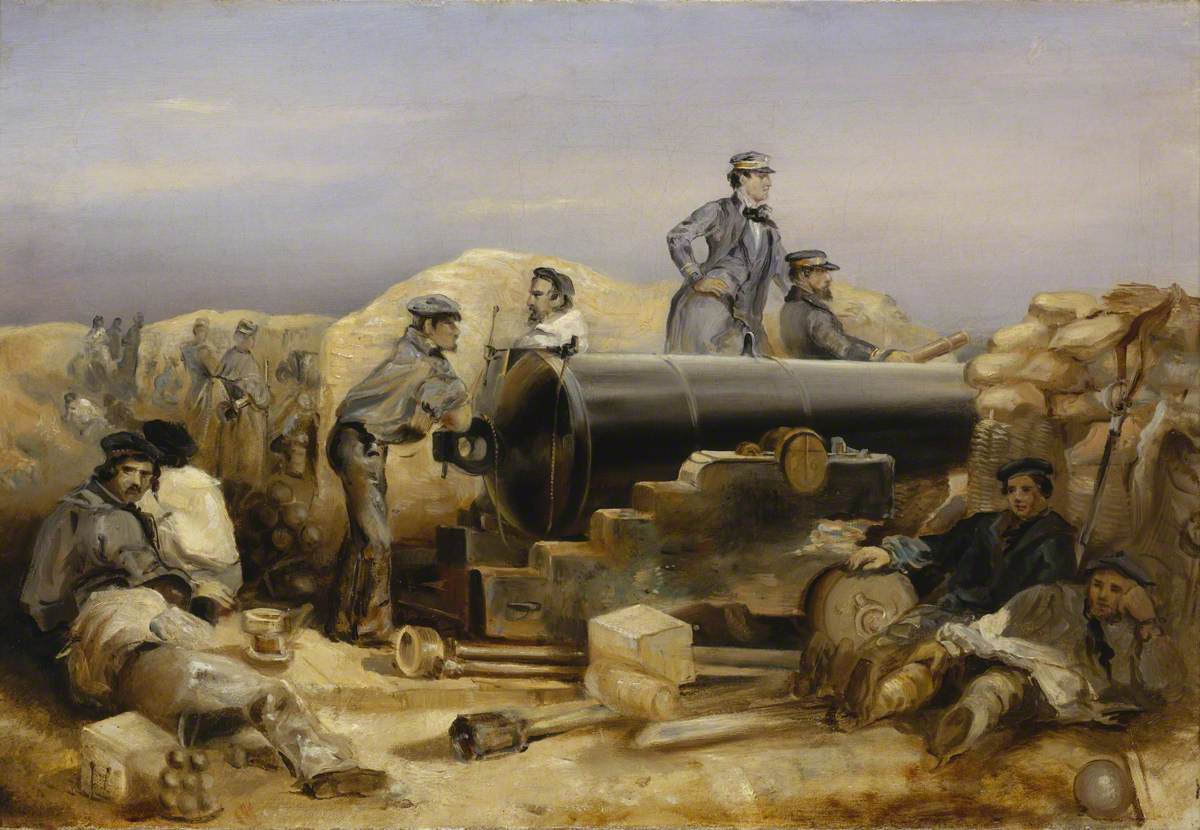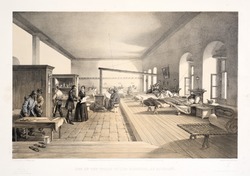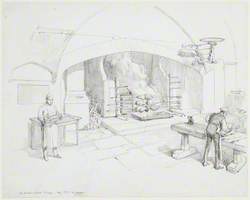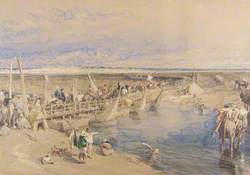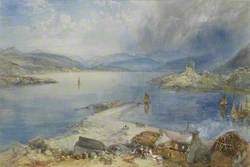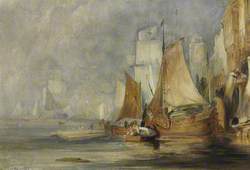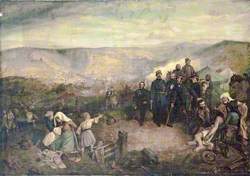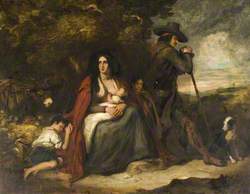How you can use this image
This image can be used for non-commercial research or private study purposes, and other UK exceptions to copyright permitted to users based in the United Kingdom under the Copyright, Designs and Patents Act 1988, as amended and revised. Any other type of use will need to be cleared with the rights holder(s).
Review the copyright credit lines that are located underneath the image, as these indicate who manages the copyright (©) within the artwork, and the photographic rights within the image.
The collection that owns the artwork may have more information on their own website about permitted uses and image licensing options.
Review our guidance pages which explain how you can reuse images, how to credit an image and how to find images in the public domain or with a Creative Commons licence available.
Notes
Add or edit a note on this artwork that only you can see. You can find notes again by going to the ‘Notes’ section of your account.
This shows the scene behind the battery where members of the frigate HMS 'Diamond' are positioned. 'Diamond' was sent to the Black Sea at the outbreak of the Crimean War in 1854. The 'Diamond' battery formed part of the Naval Brigade of 1,020 officers and men when Lord Raglan asked the Navy for assistance during the land operations. Initially the sailors contributed a non-combatant role but as more soldiers were either killed or wounded, they were replaced by the sailors. The painting shows part of the 'Diamond' battery positioned behind their trench. The tall officer standing beyond it with his hand on his hip is Captain William Peel, VC, the Commander of the 'Diamond'. Commander Burnet, wearing a beard, stands in front of him looking through the embrasure and holding a telescope in his right hand.
The Crimean War was the first in which correspondents were allowed to report first-hand from the battlefield and they sent their eyewitness accounts to London journals. Before photography replaced them, the number of illustrated magazines and newspapers meant that the importance of the war artist grew and William Simpson was one of the best known. He produced battlefield sketches and drawings in a series of notebooks which were redrawn and revised by engravers, enhancing their dramatic imagery to emphasise British heroism in far-off locations. From 1866 Simpson worked for 'The Illustrated London News', providing sketches and illustrations to accompany the text.
Title
The 'Diamond' Battery at the Siege of Sebastopol, 15 December 1854
Date
c.1854
Medium
oil on canvas
Measurements
H 31.8 x W 38.1 cm
Accession number
BHC0634
Acquisition method
National Maritime Museum (Greenwich Hospital Collection)
Work type
Painting
